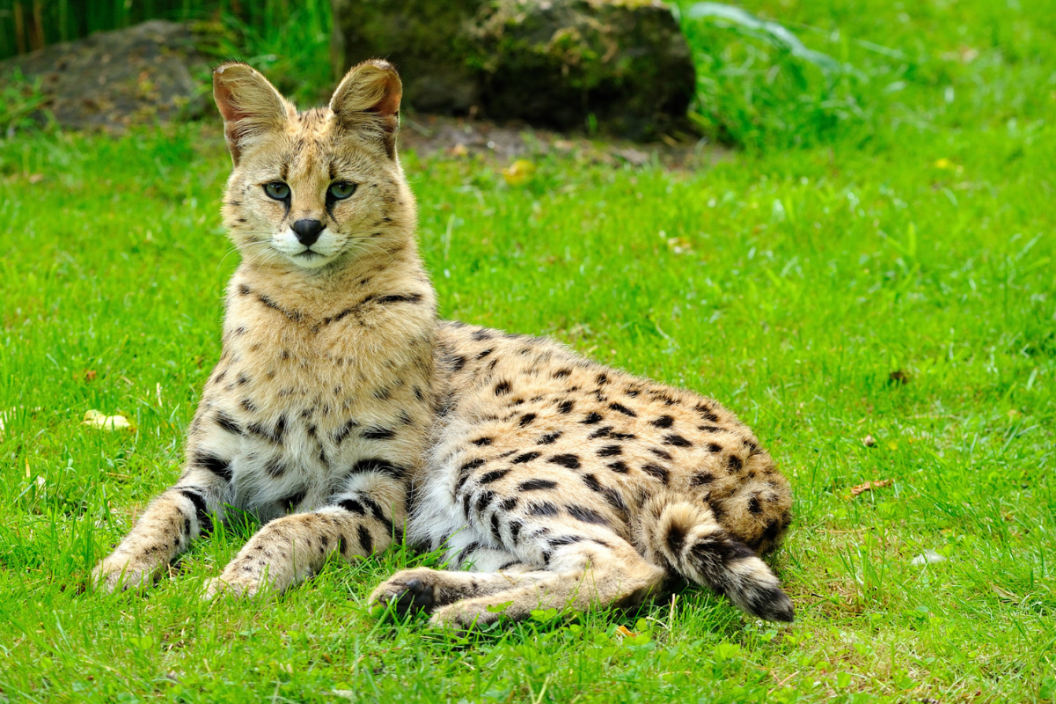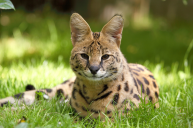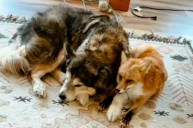Pet owners and exotic animal enthusiasts love the idea of having a rare pet. Serval kittens are the cutest, and everyone loves watching them pounce on social media, but these cats aren't for the faint of heart; however tempting it is to add one of these cheetah-like cats to your home, they turn into big cats as adults, and big cats can mean big problems.
The serval cat is strikingly beautiful, athletic, and highly intelligent. But this African wild cat requires a large commitment from its two-legged parents, more than your average house cat. Pet servals can be purchased from breeders in states where it is legal to own one, but they have many special needs, including an outdoor enclosure and a steady meat supply. Since they are from Africa, servals need a warm environment year-round with a terrain similar to home.
Serval Cat History & Characteristics
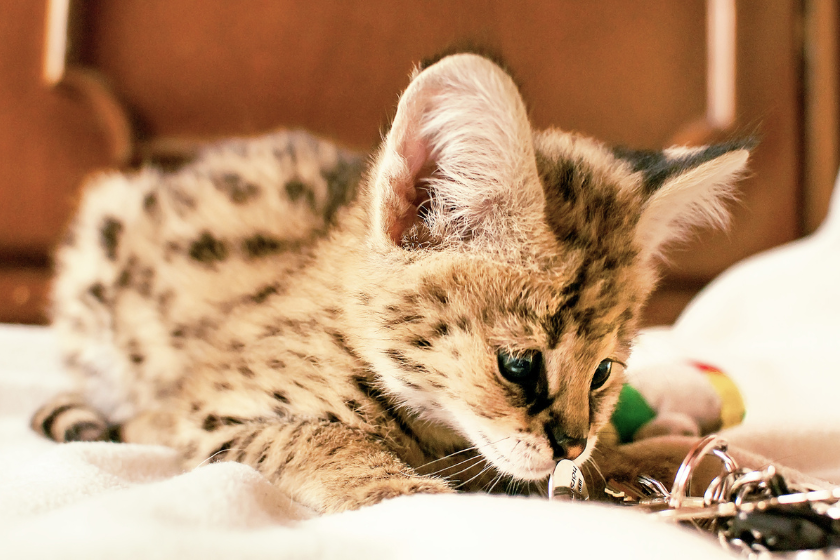
The Leptailurus serval or African servals are best known for their long legs, cheetah-like spots, and a small tail. Their heads are smaller in sized and topped with large ears. The Botswana travel guide cites that these cats are also known as the African wildcat with the longest legs! The African serval cat can grow up to 40 pounds. They live in the sub-Saharan terrain of South Africa and are called "bush cats" by the locals since these wild cats are known to prefer areas of bush, tall grass, and dry reed beds. Wild servals avoid the rainforest areas but thrive in the wetlands near rivers and streams in Africa's central and southern parts. They try their best to stay out of the warm sun and hunt at night if they need to. These carnivores share their home with caracals, who also eat the same prey and have a similar body size.
Servals have to watch out for leopards, hyenas, and wild dogs while frolicking in the water and hunting. According to the San Diego Zoo, a serval will scurry up the closest tree to get away from their predators. Unlike many other cats, they are high-energy and love to play in the water.
The coat pattern is usually a tawny color with uniquely sized black spots, some of which merge into longitudinal stripes down the back and neck with a cream-colored belly. Black servals exist as well, and are called melanistic servals. They are mostly seen in captivity but can be found in the wild as well. Their lifespan is around 20 years, while a domestic cat can live anywhere from 12- 18 years.
A female serval has a gestation period of 65-75 days and can give birth to two-three kittens at a time. Servals do not mate for life and are actually solitary animals. The kittens will be raised by their mothers before going out on their own. They live in home ranges of four to twelve miles which are marked by their saliva and urine. These areas do overlap, but servals tend to avoid one another unless it is time to mate.
What Do They Eat?
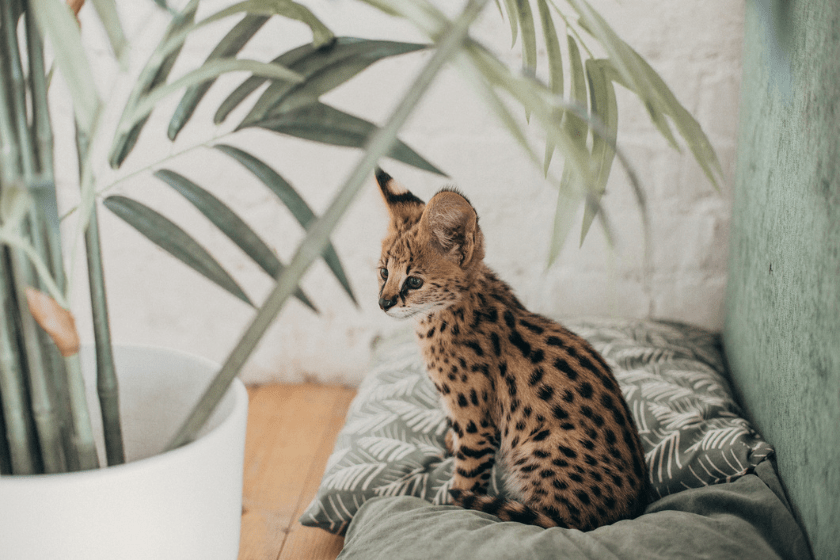
RELATED: 5 REASONS PET SNAKES ARE FANTASTIC COMPANIONS
Servals hunt a variety of animals in the Sahara region. They will eat birds, frogs, crabs, reptiles, and large insects. Their hunting style is different than other big cats. They pounce on their prey using their long limbs and body weight to take it down.
A serval's prey does not stay pinned for long. These cats swiftly end their lives by biting their necks. Servals' long arms are also used for retrieving rodents from their burrows and swiping an occasional bird out of the sky, which is easy since they can jump about nine feet into the air.
The Serval: Not Your Typical Pet

Servals are wild animals and generally don't make the best pets. While some people are drawn to living with exotic pets, there are many risks in owning a pet with predatory instincts. Unlike owning other pets, having an exotic animal like a serval comes with many other responsibilities.
Ownership also requires permits, inspections, and a license. However, some cities and states have their own rules for owning big cats. According to Big Cat Rescue, if you live in states like California, New York, Oregon, and Washington, you cannot own a serval as a private citizen. States like Texas, Arizona, Montana, and Pennsylvania will allow you to own a big cat with a permit. Alabama, Nevada, North Carolina, and Wisconsin do not have any laws for owning a wild animal like a serval.
The savannah cat was created in an attempt to get a domesticated version of the serval. According to The San Diego Zoo, a domestic cat was bred with a serval raised in captivity to create this exotic-looking breed. The zoo cautions against owning servals or any other wild animal as a pet: "Non-domesticated wildlife, even those born in zoos, keep their wild instincts for hundreds, even thousands of years, so these cats do NOT make good pets." The zoo also points out that there are states that outlaw the ownership of savannah cats and servals.
It is best to do your research before you jump into the ownership of any pet. But, it may be best to leave servals in the care of wild animal rescues and zoos, where they can live their best lives, or better yet, in the wild plains of Africa. There are plenty of unique domestic cat breeds that would love to call your house their home.
This article was originally published on December 30, 2019.
